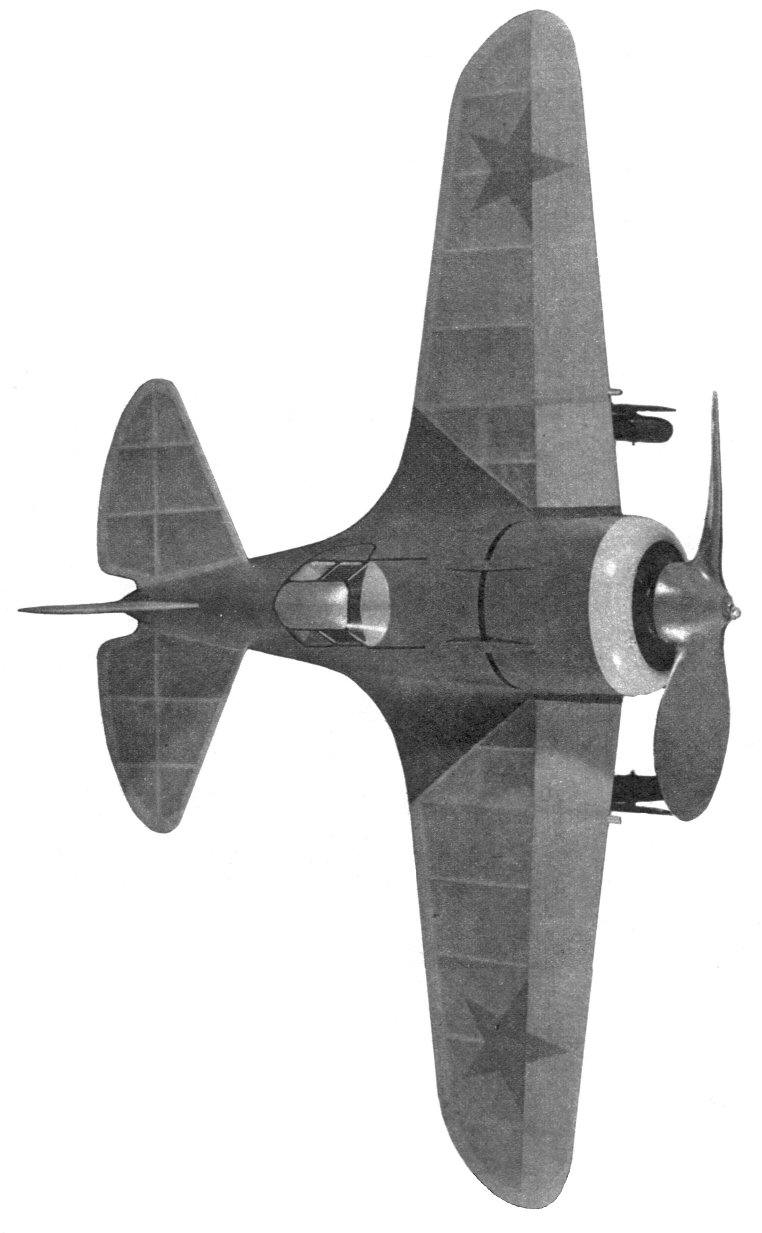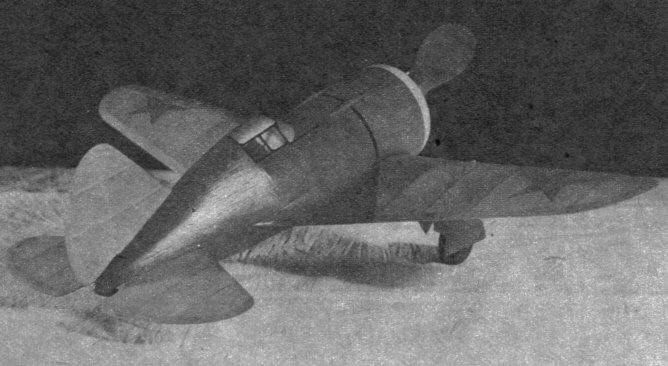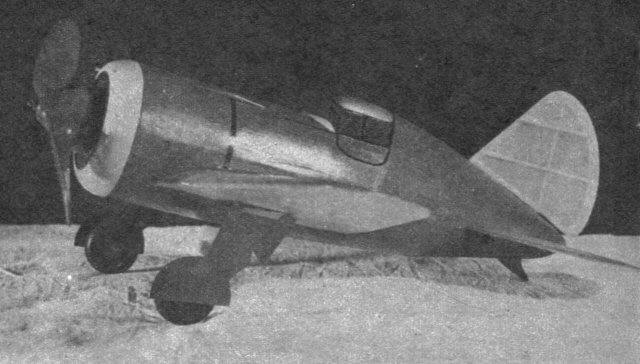|
Mosca flying Scale BY H. A. THOMAS
A veteran of Spanish, Chinese, and Russian fronts, this stubby I-16 fighter makes an unusual flying-scale job. HAVING seen actual service on several war fronts, including the Spanish civil war, the doughty little Russian Mosca I-16 fighter is indeed a veteran. Reports have largely been favorable as to its performance, even though the blunt, stubby lines and the small dimensions contrast sharply with the sleek proportions of other pursuit craft. A big 700 h. p. Cyclone engine of American design and Russian manufacture is responsible for the huge cowl. Top speed is reported to be around 300 m.p.h., and the landing speed of 95 m.p.h. is not surprising for a plane of such limited wing area and span. From the standpoint of flying ability as a scale model, the Mosca is not the very best selection, but for realism it is all that could be desired. The model is sturdily built, the fuselage being entirely sheet-balsa-covered. The large-size tail surfaces of the original permit the use of true scale proportions, the only deviations being increased dihedral and propeller, dimensions.
The fuselage formers are cut from laminated balsa consisting of soft 1/16" sheet cemented to soft 1/32" sheet with the grain crossed. Spars are joined by cementing the 1/32" sheet reinforcement in place, and the complete spar is then cemented to the rear of Former B. Formers are assembled by means of the four stringers, and the soft 1/32" sheet covering is applied in sections. Cowl front is formed of layers of soft 1/8" sheet, the rear fuselage tip is a hollowed balsa block, and the cockpit top is also shaped of balsa. Dope fuselage and sandpaper lightly. Assemble the ribs to the spars, attach the leading and trailing edges, fitting their inner edges to the fuselage sides. Attach the tips and the lower, triangular fairing pieces. Bend the landing-gear struts of .040 steel wire, and after adding the 1/8"-sq. braces to the wing frame, bind and cement the landing gear to the wing. Attach the hardwood wheels. Cover the upper leading edge to the spar with soft 1/32" sheet and sand the entire wing frames lightly. Make paper patterns of the wing fairings, trimming them until they fit perfectly. Cut the soft balsa outlines and pin and cement them in place. Tail surfaces are of conventional construction. They should be finished and covered with tissue before being carefully cemented to the fuselage. Wing and tail surfaces are covered with tissue, water doped, and are later given two coats of thin dope. Tail skid and wheel fairings are cut from 1/32" plywood. The tail skid is cemented to the fuselage and the fairings are lightly bound and cemented to the landing gear. Patterns of the fairings should be cut from black tissue and later doped to the under surface of the wing to indicate the wheel wells. Carve the propeller from a medium-hard balsa block. Dope it several times, sandpapering between coats to produce a smooth finish. The freewheeling fitting was purchased from a model dealer ready to install. Bend the propeller shaft and assemble the hardwood nose button, washers, and propeller. Add such detail as windshield, gun barrels, gun fairings, et cetera. The original model had orange tissue wings and tail, olive-drab-painted fuselage, propeller and landing gear, yellow cowl front, and other details in black. Red tissue stars were doped to the wing. Install a lubricated eight-strand motor of 1/8" flat rubber. Check all parts for alignment, balance and test glide. Add slight weight to nose or tail if necessary. Make the first flights over grass or tall weeds to prevent damage while the model is being adjusted. Good luck! BILL OF MATERIALS
Scanned from May, 1942 |
||||||||||||||||||||||||||||||||||||||||


